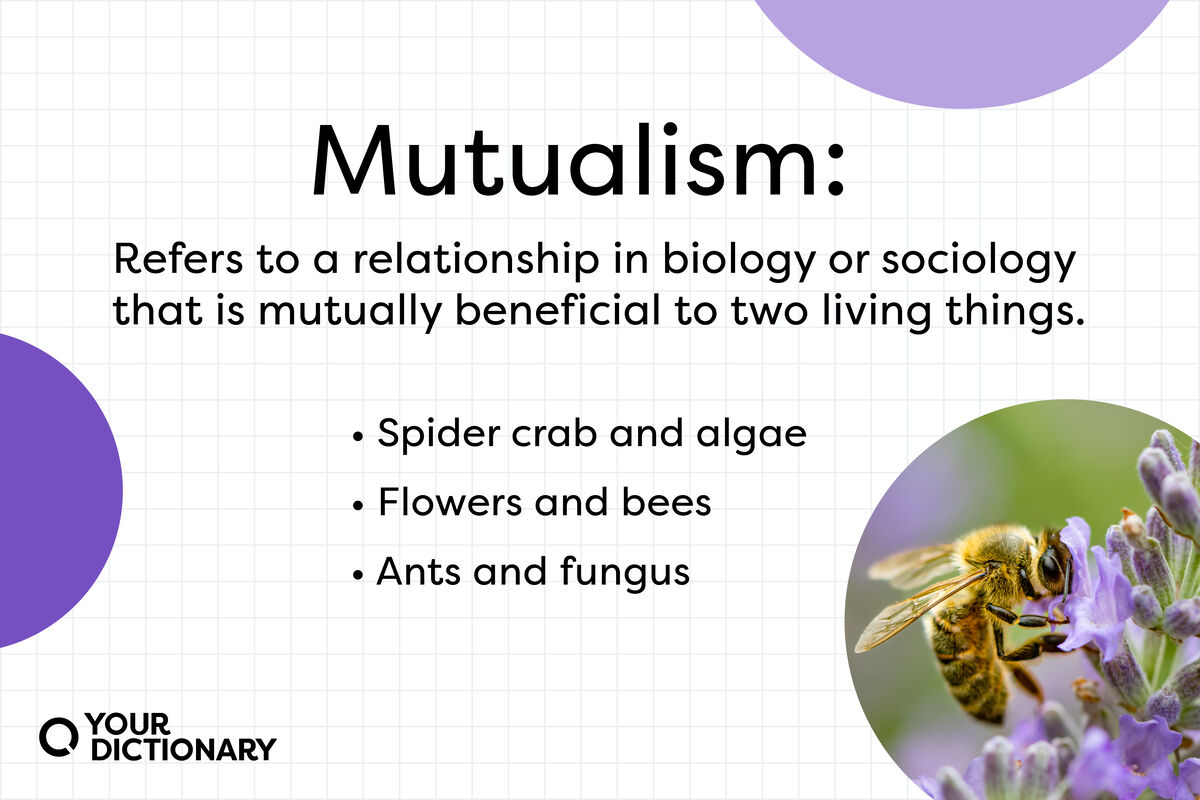
The term mutualism refers to a relationship in biology or sociology that is mutually beneficial to two living things. This relationship can be within the species, between living things from two different species, between individuals in a society and between two societies. Each participant in the mutualistic relationship is called a symbiont.
Common Examples of Mutualism
- Oxpeckers and zebras or rhinos - In this relationship, the oxpecker (a bird) lives on the zebra or rhino, sustaining itself by eating all of the bugs and parasites on the animal.
The bird benefits by having a readily available source of food.
The zebra or rhino benefits from having the bugs removed. Also, when there is a danger to the zebra or the rhino, the oxpecker flies high and makes much noise in order to alert nearby animals to the impending danger (i.e. a predator).
- Digestive bacteria and humans - Human beings have what are often called “good” bacteria in their digestive systems. This “good” bacteria exists in order to help the human to digest food.
Some foods cannot be digested entirely; so, when these foods are consumed, the bacteria in the digestive system feed on those foods.
The bacteria stay alive.
The human gets help with the process of digestion.
- Protozoa and termites - Much like the digestive bacteria in human digestive systems, protozoa help termites to digest the food that they eat.
The protozoa benefits by getting food for itself.
The termite benefits by being able to live.
- Sea anemones and clownfish - Clownfish are often found living amongst the tentacles of the sea anemone. While those tentacles are able to sting nearly all other fish, the clownfish, thanks to the mucus on its skin, is protected from the stinging.
The clownfish has a safe place to live.
The sea anemones are saved by the clownfish from being eaten by their predators, the butterfly fish.
- Spider crab and algae - With the ocean as its habitat, spider crabs often spend their time in some of the most shallow areas of the sea making them highly visible to predators. However, living on their backs are algae that act as camouflage.
The algae has a place to live.
The spider crab remains camouflaged and safe from predators.
- Flowers and bees - Bees and flowers have a mutualistic relationship as well. Bees get the nectar they need to make honey by traveling between flowers. The bee brings pollen from one plant to another, resulting in pollination.
The bee is benefitting by getting food.
The plants benefit from being pollinated.
- Humans and plants - It is a well known fact that plants and humans could not exist without each other. This mutualistic relationship is based on the fact that:
Humans utilize the oxygen that plants give off and exhale carbon dioxide.
Plants use the carbon dioxide to create that oxygen that the humans need.
- Ants and fungus - Ants actively create fungus, sometimes using leaves and their own fecal matter. Once the fungus grows, the ants eat it to sustain life.
The fungus is given life by the ant.
The benefit to the ant is that the fungus is food.
Now you have seen lots of examples of how mutualism works in real life.